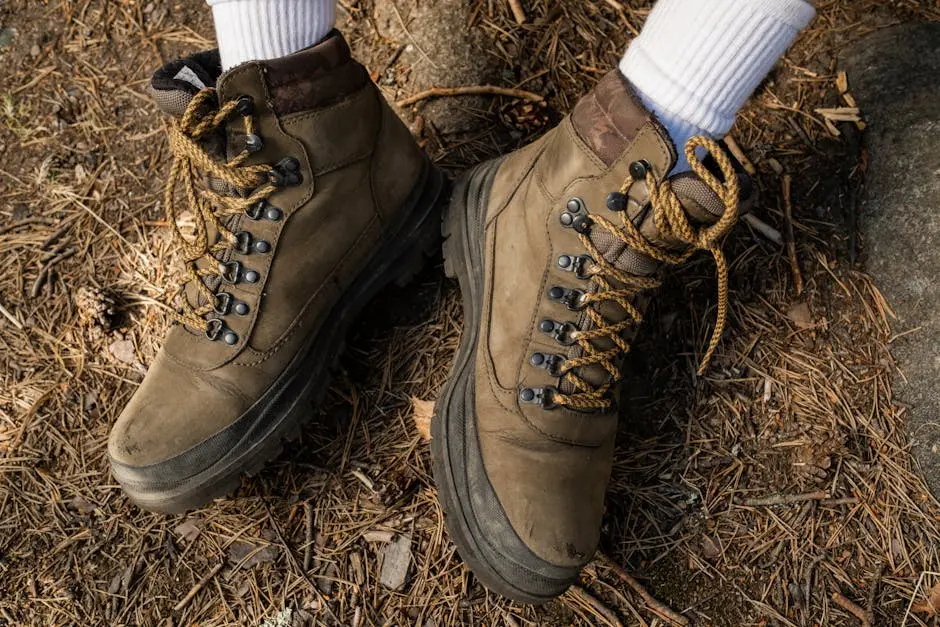
How do zero drop hiking shoes differ from traditional hiking boots?
Exploring the great outdoors is an adventure that begins with your feet. Let’s dive into the world of hiking footwear, comparing zero drop hiking shoes to traditional hiking boots to see which might be the best fit for your next journey.
What are Zero Drop Hiking Shoes?
Zero drop hiking shoes are designed to keep the heel and toe at the same height, promoting a more natural foot position as you walk. This section will explain their design philosophy and potential benefits for hikers. Unlike traditional hiking boots that elevate the heel, zero drop shoes aim to mimic the foot’s natural stance, encouraging a healthier walking and running motion.
The concept of ‘zero drop’ stems from the barefoot running community, which advocates for minimal interference between the foot and the ground. Zero drop hiking shoes extend this philosophy to hiking, supporting the idea that a more natural foot position can lead to improved posture, reduced joint stress, and a stronger connection with the terrain.
Those who prefer zero drop hiking shoes often report an increased sense of balance and agility on trails. This feeling of being more ‘in touch’ with the ground can enhance the overall hiking experience, allowing for more precise foot placement on uneven surfaces.
The Design and Benefits of Traditional Hiking Boots
Traditional hiking boots, known for their support and durability, have been the choice of hikers for decades. Here, we’ll dive into what makes them different, focusing on their structure, support, and protection. With a more robust design, these boots often feature a significant heel-to-toe drop, providing a cushioned platform that can ease the impact on the feet and legs over long distances.
The added ankle support in traditional boots is a key factor for many hikers, especially those traversing rough, unpredictable terrain or carrying heavy backpacks. This support can help prevent sprains and injuries, which is paramount in remote outdoor settings.
Moreover, the durability and protection offered by traditional hiking boots are unmatched. Their sturdy construction can withstand harsh conditions, offering peace of mind that your feet are well-protected against rocks, roots, and moisture.
Comparing Traction and Stability
The grip and stability offered by your hiking footwear can greatly impact your hiking experience. We’ll compare how zero drop shoes and traditional boots perform on various terrains. Zero drop shoes often have a thinner sole, which can offer superior traction and allow for better foot flex, adapting more readily to uneven surfaces.
In contrast, traditional hiking boots typically feature deeper lugs on the sole, providing excellent grip on soft, muddy, or slippery terrains. Their sturdier build and sole design contribute to a stable platform, reducing the likelihood of slipping.
When considering traction and stability, the choice between zero drop shoes and traditional boots may come down to the specific conditions of your hike. Zero drop shoes might excel on dry, rocky trails, whereas traditional boots could be the better option for wet and muddy paths.
Comfort and Fit: Zero Drop vs. Traditional Boots
Comfort is key on long hikes. This section will address how the differing designs of zero drop shoes and traditional boots affect overall comfort and fit for hikers. Initially, zero drop shoes may require an adjustment period as your feet and legs adapt to the new alignment and movement.
Over time, however, many hikers find that the natural foot position enabled by zero drop shoes increases comfort, especially on longer treks. The wider toe boxes often found in these shoes also allow for natural toe spread, reducing the risk of blisters and discomfort.
Conversely, traditional hiking boots are designed for immediate comfort with thicker cushioning and structured support. This can enable hikers to undertake long distances without the need for a lengthy adaptation period, although the heavier design may lead to faster fatigue over time.
Considerations for Transitioning to Zero Drop Shoes
If you’re thinking about switching to zero drop shoes, there are some important considerations to keep in mind. This part will offer tips on making the transition smoothly and safely. Gradually increasing the time spent in zero drop shoes will help your muscles and tendons adapt without undue strain.
Listen to your body during the transition. Discomfort and soreness are to be expected, but sharp pain or persistent problems are a sign to proceed more cautiously. Incorporating strength and flexibility exercises can also ease the adjustment to zero drop hiking.
Finally, be patient with yourself and the process. Transitioning to zero drop shoes is not just about changing footwear; it’s about altering the way your entire body moves. Embrace the journey as part of your growth as a hiker.
Conclusion: Which Is Right for Your Hiking Adventures?
As you can see, zero drop hiking shoes and traditional hiking boots offer different advantages that cater to various needs and preferences. The choice between them is not a one-size-fits-all but rather a personal decision based on your specific foot structure, hiking style, and trail conditions. Whether you align more with the natural philosophy of zero drop shoes or prefer the time-tested support of traditional boots, there’s a pair out there that’s perfect for your next adventure. Remember, the best hiking shoes or boots are the ones that keep you moving comfortably and confidently, no matter where the trail may lead.
Finding Your Perfect Hike Companion
Selecting the right footwear for your hike can make a significant difference in your comfort, performance, and enjoyment. Whether you choose zero drop hiking shoes for their natural foot alignment and increased ground sensitivity or traditional hiking boots for their cushioning and ankle support, the best choice depends on your personal preference, foot shape, and the nature of your hiking trails. Ultimately, both have their place in the hiker’s wardrobe; it’s just about finding what works best for you.
- Choosing a selection results in a full page refresh.
!


























































